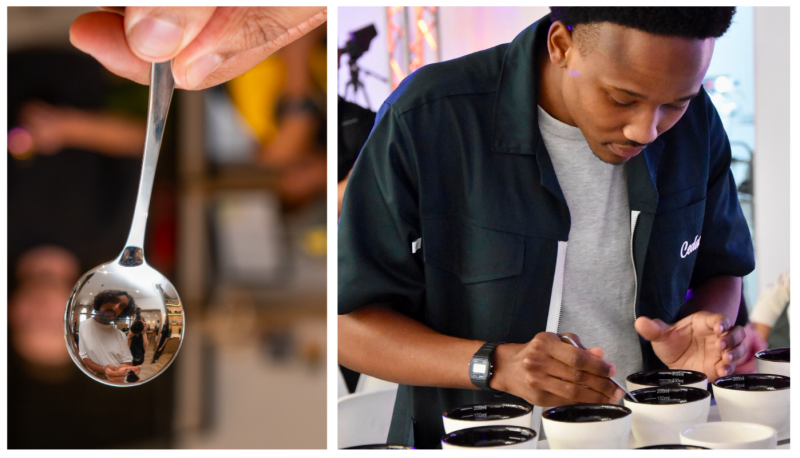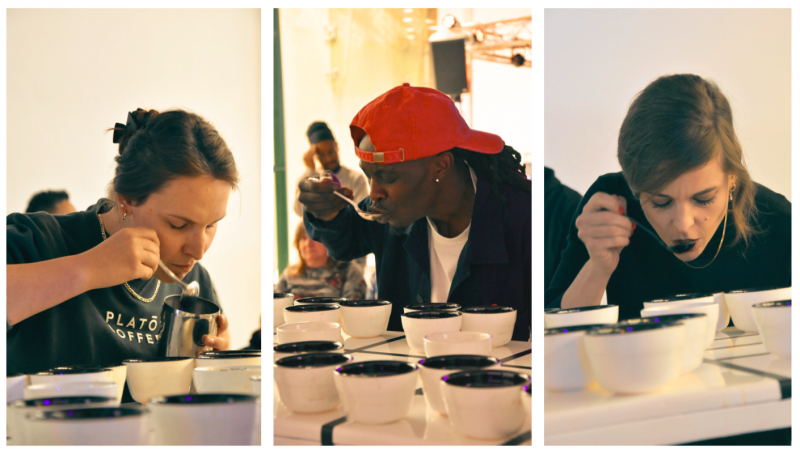By Claire Strydom and Henning Lubbe Directors: Portfolio: Education & Training | SCASA
In November 2024, the Specialty Coffee Association (SCA) introduced the Coffee Value Assessment (CVA)—a major update to how we evaluate coffee globally. The CVA includes three new standards: Sample Preparation and Cupping Mechanics, the Descriptive Assessment, and the Affective Assessment. Together, they form a more flexible, transparent, and inclusive system for tasting and talking about coffee.
The aim of the CVA is to provide a set of tools that help professionals describe flavor, understand preference, and make better decisions—whether you're a producer, roaster, barista, buyer, or trainer.
If you’ve used the traditional cupping system from 2004, switching to CVA might feel a bit like re-inventing the wheel but with time it becomes a natural way of communicating.

At its core, the CVA separates description from evaluation—a key shift that brings more clarity and honesty to cupping. It embraces the fact that while flavor can be described objectively, preference is personal and shaped by context, culture, and market needs. This shift allows the coffee industry to better reflect the diversity of taste and quality that exists across the supply chain.
The CVA includes four types of assessments:
Descriptive – What are the coffee’s sensory attributes
Affective – How does the coffee make you feel?
Physical – What are the measurable physical traits of the coffee?
Extrinsic – What external factors (origin, variety, processing) influence value?
Let’s dive into the core of the sensory perception of the CVA - The Descriptive & Affective Assessments. Both assessments ask cuppers to record attributes over categories such as:
Fragrance/Aroma
Flavor/Aftertaste
Acidity
Sweetness
Mouthfeel
The Descriptive Assessment helps cuppers describe coffee without assigning value or preference, which in turn enables us to speak a common language. It uses CATA (Check-All-That-Apply) boxes to record sensory attributes across the categories.
This tool promotes:
Consistency – A shared sensory vocabulary.
Efficiency – Easier to complete under time pressure.
Clarity – Transparent feedback for producers and exporters.
Usefulness – Stronger traceability and more accurate storytelling.
The Affective Assessment is about how coffee makes you feel, guiding us on how to showcase our preference, explicitly. It asks you to score your impression of a coffee using a 9-point hedonic scaleacross the categories.
What makes the 9-point scale special is its neutral midpoint, allowing tasters to honestly express whether a coffee moved them positively, negatively, or not at all—without pressure to conform to norms.
This matters because taste is always subjective. A group of cuppers might all agree that a coffee is “floral,” but one may find it refreshing while another finds it soapy. The Affective Assessment captures these differences transparently.
Promotes honesty – Tasters aren’t penalized for preference.
Encourages market awareness – Scores can reflect intersubjective cupping, where preferences are aligned with customer needs.
Prevents “backward scoring” – With a structured score calculator, you avoid assigning a final score first and justifying it after.
Improves value clarity – Helps spot stand-out coffees and avoid compressing everything into narrow scorebands
Supports clear intent – Cuppers record the purpose of each session, contextualizing results.

Transitioning to using the CVA doesn’t have to be overwhelming. Here are three practical ways to get familiar with the system:
Break tasting into two parts:
Describe it: What does it taste like? Use categories like fruity, nutty, floral, etc.
Evaluate it: How much do you like it? Score each attribute on a 1–9 scale.
Try this with snacks, drinks, or coffee you know well. You can even “cup” for someone else based on their preferences—perfect practice for market-focused cupping.
CVA focuses on broader flavor categories (like “fruity” or “floral”) rather than ultra-specific notes.
Use the SCA Flavor Wheel or aroma kits to build recognition.
Practice identifying category-level descriptors—it’s how you’ll talk about flavor with customers, colleagues, and producers.
Each CVA assessment—Descriptive, Affective, Physical, and Extrinsic—can be used independently depending on your goals. For example:
Use the Affective Assessment when testing roast profiles.
Use the Descriptive Assessment when writing tasting notes or calibrating teams.
Start with what feels most useful to your workflow and build from there.
The Coffee Value Assessment reflects a big idea: quality isn’t fixed—it’s contextual. By separating objective description from subjective evaluation, the CVA helps you better understand coffee, your market, and your own preferences. We can use these assessments to help us align sales expectations with customers or producers and to train teams or evaluate roast profiles. Tools like Catador, Tastify and Cropster have integrated the Descriptive Form to do just that. Trainers or roasteries can use the Affective Form to calibrate staff or cafes can use it to allow consumers to provide feedback, closing the loop. It’s about understanding what’s really in the cup—and who it’s for.
Start small, be curious, and over time, the CVA can become second nature, allowing us to communicate more effectively with producers and customers alike. Keep an eye out for our upcoming workshops exploring the CVA together!
Links & Tools:
Credit to SCA for information and resources: sca.coffee with special reference to Laura Carmichael’s series on using the CVA for Cuppers
CVA on Tastify: https://www.tastify.com/
More info & link to downloadable PDF of the CVA: https://sca.coffee/value-assessment
Score Calculator: https://sca.coffee/cuppingscore